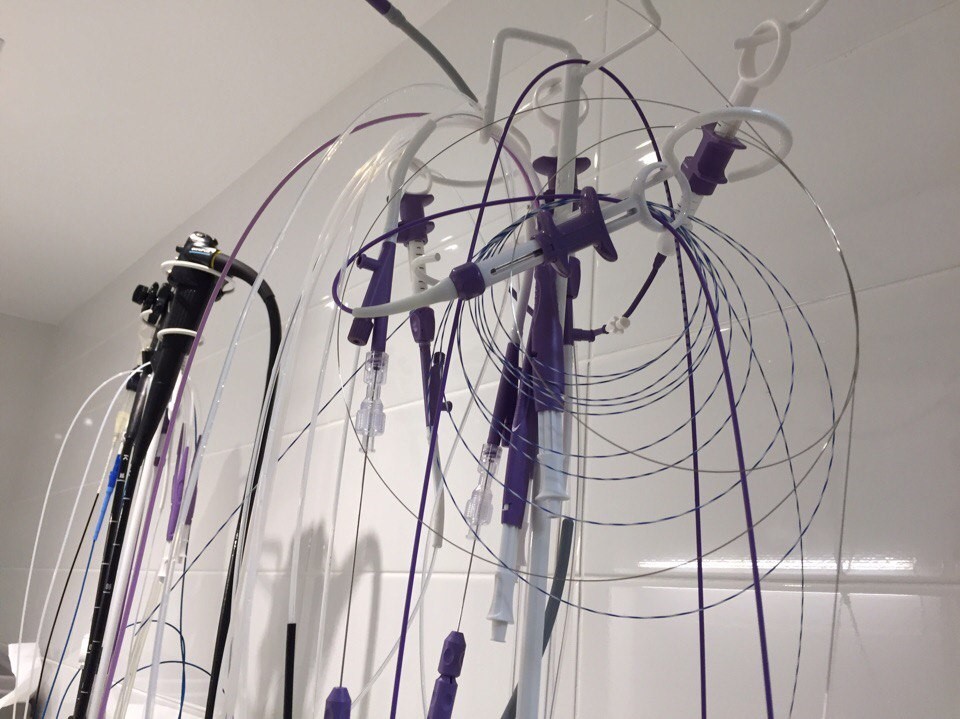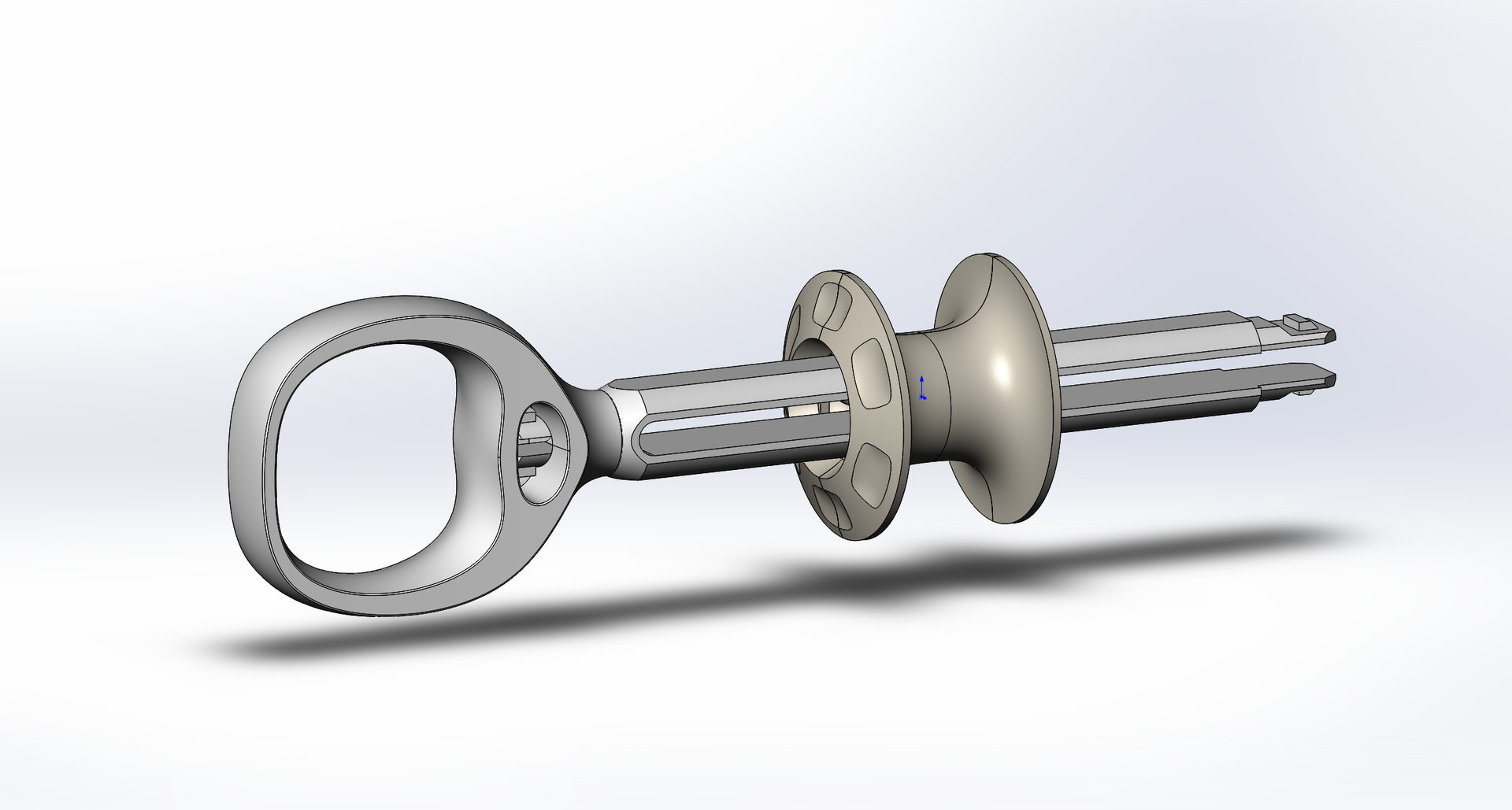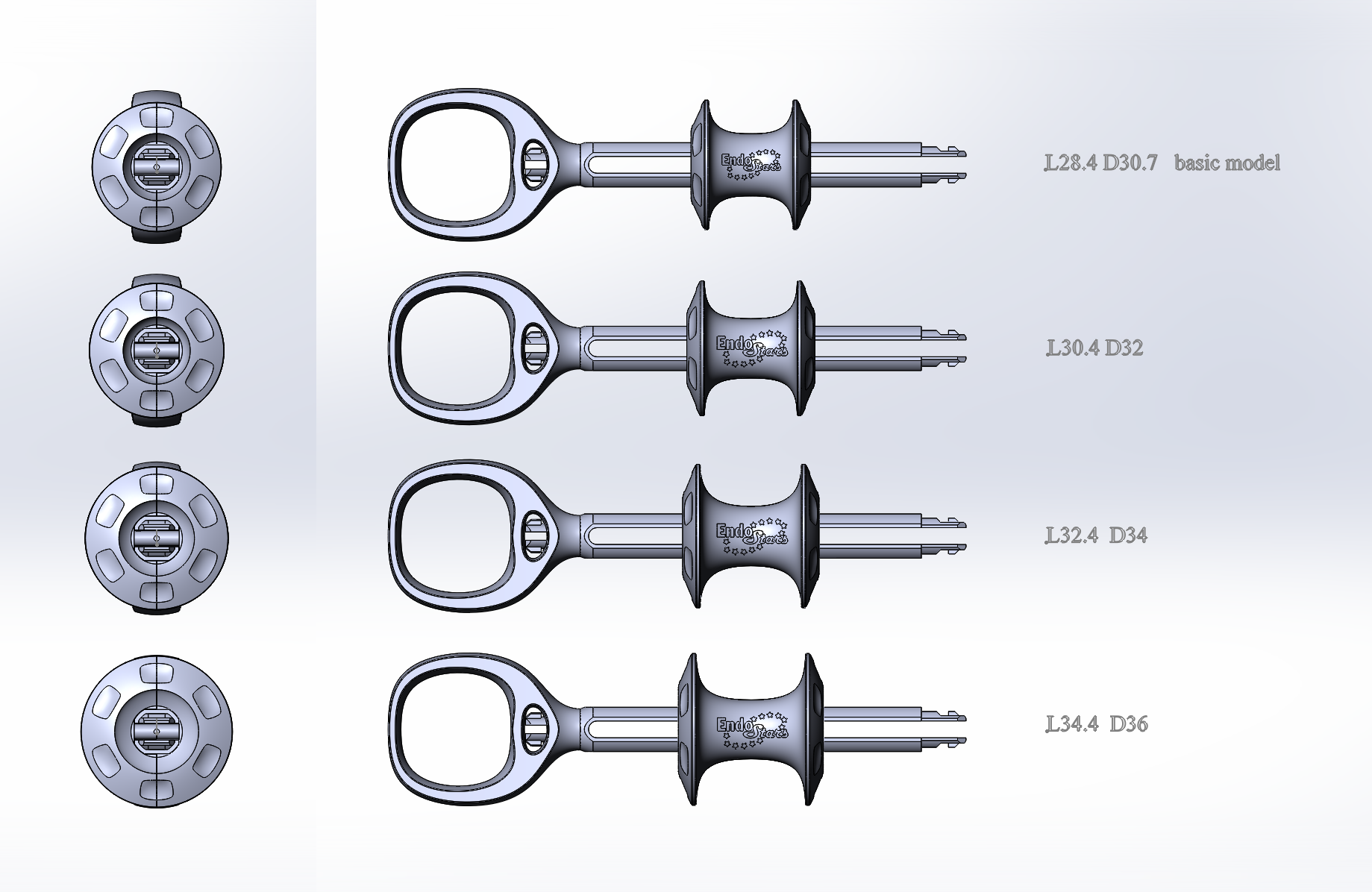3D modeling and flexible endoscopy
Hello friends! Today we will tell you what is common in endoscopy and three-dimensional modeling, namely, we will tell how one very interesting device was designed for hellish torment effective treatment of people.

As you probably know, flexible endoscopy is a medical way of examining internal organs using a special light-transmitting device equipped with fiber optics - an endoscope. In this case, some auxiliary instruments are also used in the procedures, for example, special biopsy forceps - a tool for directly sampling tissue, as well as clip applicators . This, in turn, provides stapling instruments for mechanical hemostasis. In the medical community, their use is recognized as the most modern and effective endoscopic methods for stopping bleeding.
Until now, the quality, speed and success of procedures performed with the help of clip-applicators depend on the skills of the doctor, or, more precisely, on the fine motor skills of the fingers that hold and guide the device. Such work requires a great deal of experience, which is accumulated at special educational stands - and only after a certain number of training hours does the clinician be allowed to perform procedures on living people.

Now, as a rule, such tools are disposable, are manufactured with a circulation of hundreds of thousands of pieces and are aseptically packed: used and discarded. But this was not always the case - medicine did not immediately come to the use of disposable devices. Let us recall at least the history of the use of syringes - initially only reusable syringes existed. They were quite expensive to manufacture, being, as a rule, made of metal and glass. These syringes, of course, were convenient for clinicians - often they were even made specifically for a particular eminent doctor! - but the instruments required careful sterilization after each use.
Undoubtedly, this was a huge disadvantage - any reusable device, given the human factor, is a potential peddler of the infection, which in the example with syringes often resulted in various post-injection abscesses. But on the background of the beginning of the widespread use of plastic, the same syringes began to make of it, which significantly reduced the cost and allowed to make them disposable. At first it was uncomfortable devices for doctors, something in the style of a syringe, which you can now find in a children's toy set - but you had to choose: convenience or complete sterility.

So why were they uncomfortable? The design of such tools was dictated by their function and manufacturing techniques from the point of view of the lowest cost: the minimum consumption of resources, simplicity of the mold, the smallest number of components for fast and cheap assembly using unskilled labor. Thus, these products can not be called ergonomic, and the required accuracy was achieved by a doctor not because of their design, but rather in spite of.
A similar situation unfolded with clip applicators. However, in the modern world, it is difficult to compete in the market of medical equipment and instruments, presenting an inconvenient product to use. Disposable instruments, including clip-applicators, have long been used everywhere, and the manufacturer will benefit from making a user-friendly, user-friendly, user-friendly product.
From idea to production
At FORMA, we design in the classic sense of the word - that is, design - and from design to design documentation and serial production support. We have long observed the position of the issues of ergonomics in medicine, and at some point we were approached by a Petersburg company that produces tools for endoscopic procedures.
The company, being the leading supplier of endoscopic equipment in Russia, in 2015 thought about a logical step for the further development of the company - launching its own product line. The decision to start production was based on eight years of experience in selling and distributing equipment: indeed, having invaluable knowledge of what types of consumables for flexible endoscopy are most in demand now, and which ones the market will need in the future, the company intelligently relied on the “pilot” line products, the very first of which was the clip-applicator E-Clip.
At that time, only foreign instruments of this kind existed on the market, and all of them were designed for repeated use - accordingly, the selling price was quite high, which meant that there was a certain shortage in medical institutions. The client company decided to submit a one-time clip-applicator, thereby solving the problem of the need for sterilization and autoclaving and significantly reducing its cost. Plus, having the experience of selling equipment and tools for flexible endoscopy, they knew perfectly well what clinicians have any wishes and complaints directly with similar equipment working — thus, it became possible to maximally adapt the product to these conditions and make it, as they say, user-friendly.
It should be noted that the company-customer then had a prototype clip-applicator, developed exclusively taking into account the basic functional characteristics. Our studio was faced with the task of making the case as user-friendly and ergonomic as possible - the accuracy and speed of the teller’s work depends on this, which significantly affects the painfulness of the procedure. Moreover, it is obvious that in any medical manipulations in which the patient remains conscious, the psychological factor is very important, namely, “how everything looks”. The patient will not just be scared away, but will be horrified by a metal something of angular forms, and the era when any medical equipment looked like a prop from a cheap horror movie has long passed.
And, of course, the company needed to get a product at the output that would set the overall style of the future line of tools - in short, a great deal depended on the design solution of the clip-applicator.
The hard work began - the very first step in the implementation of any such project is to immerse in the subject. This and benchmarking, that is, the study of potential competitors in order to identify the most advantageous and - on the contrary - unsuccessful decisions of any constructive aspects. This also includes the research component - as noted earlier, it is impossible to create a truly ergonomic device without having information about the wishes and complaints of real clinicians working with the toolkit. In the case of this particular project, the research took place at almost every stage of the work.
When the general vector of the project development is set, the preliminary search stage begins - the first sketches are created, as a rule, on paper, which then pass through the primary internal moderation.

After the preliminary search stage — that is, the usual freehand drawings on paper — there is a stage of modeling in three-dimensional solid-state media. Of course, at this stage, the depth of study cannot be called detailed - these are essentially the same rough sketches, transferred into 3 dimensions. Next comes the rendering stage, that is, creating photorealistic images (renders) based on a 3D model. Surface materials are superimposed on it: the result is an image of the future object, hardly distinguishable from a photo — which is very convenient, because in the future the customer can use the render to place on his website or in advertising publications.

As a rule, several variants of design in the form of renders are offered to customers in the form of reporting materials for choosing the vector of continuation of work - this customer, as often happens, identified several options and asked for the final combined - a combination of several proposed. Three versions of the color performance of the course product version in the same style using a bright, even quite acidic shade of yellow - the corporate color of the company were presented. The decision on the color performance was postponed until the stage of prototyping - for greater clarity.

Then the engineering work began - a detailed study of the three-dimensional model - every smallest detail was studied and corrected. The reporting material here is usually a detailed three-dimensional solid model with a complete set of design documentation - in short, everything so that the customer can immediately, without any additional actions, turn to production - for example, to make molds or molds for casting into silicone .

In this case, the customer was presented with 3D-models of several variants of the coil-holder, differing in dimensions.

Several prototypes of photopolymer were printed for accurate study of ergonomics, namely, how the device lies in the hand and how convenient it will be to perform the corresponding manipulations with it.
As a result of the test studies and further survey of clinicians, it turned out that the option with the largest diameter of the coil turned out to be the most convenient - it fit perfectly in any hand. After thorough processing of all surfaces, the corresponding prototype became a master model, on the basis of which the equipment is created - silicone molds for the subsequent casting of clipper parts.
The first experimental product series was cast, assembled and again sent to study and testing for real doctors - the pen holder was highly appreciated. After that, the final step was finally carried out - the injection molds were ordered. The first batch of parts produced, which arrived from abroad, passed the incoming quality control, was assembled, underwent final quality control, packaging, labeling, sterilization at the customer’s facilities and — as they say — scattered like hot cakes, immediately proving the product as comfortable, ergonomic and aesthetically pleasing device.
')
Now the clip-applicator is produced by thousands of copies, and the fate of each product made is determined in advance: the customer company has contracts for the supply of products with medical institutions in St. Petersburg, Moscow, Novosibirsk and many other Russian cities.
The applicator holder designed by us turned out to be really very ergonomic, comfortable, and simply aesthetically pleasing: so much so that the client company decided to use it in its other products of a similar or almost similar format - biopsy forceps, as well as an economical modification of E-Clip, ECO-Clip applicator. Plus, such a solution is very convenient from an economic point of view - for the production of tools did not have to order new expensive molds.
The history of the E-Clip clip-illustrator clearly illustrates the need for a direct dialogue not only between the customer and the developer, but their joint communication with a wide range of potential users of the future product - this, as in this case, will help create an aesthetic, comfortable and - most important thing! - pleasant to use product.
Source: https://habr.com/ru/post/400913/
All Articles